Peregrine Falcon population continues to hold ground in Virginia
Golden eagle tracked to Northern summering area
June 12, 2008Aerial surveys for cliff-nesting birds extends into the southern Appalachians
June 14, 2008
Written by Elizabeth Mojica
June 13, 2008
CCB biologists have worked in partnership with the state of Virginia, the U.S. Fish and Wildlife Service, and various other partners since the late 1970s to restore and manage peregrine falcons in Virginia. We monitored 21 breeding pairs during the 2008 breeding season.
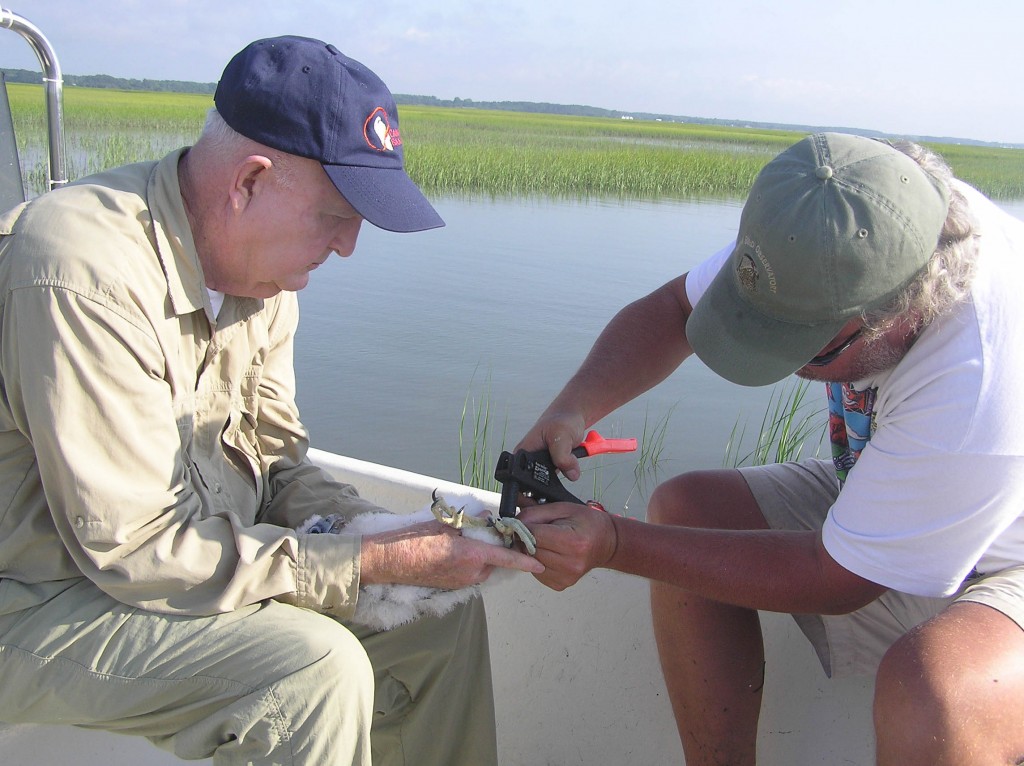
Mitchell Byrd and Bart Paxton band a peregrine falcon chick near Upshur Bay, VA. Photo by the Center for Conservation Biology.
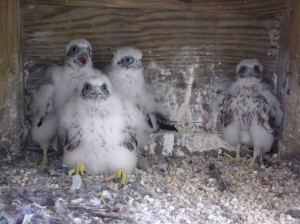
Four peregrine chicks peer out of a nesting box. Photo by Bryan Watts.

Two peregrine chicks from a nest in an Eastern Shore marsh, VA. Photo by the Center for Conservation Biology.
This year the entire breeding population nested on artificial structures including wooden peregrine towers (12), bridges (5), a fishing shack (1), a ship (1), a power plant stack (1), and a high-rise building (1). The single territory on a natural cliff face in Shenandoah National Park was not active this year.
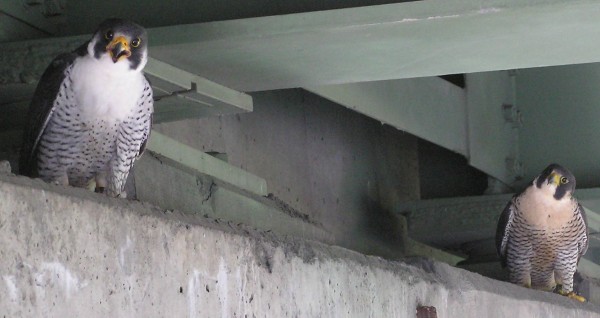
Adult male (left) and female (right) peregrines beneath a bridge in Norfolk, VA. Photo by Libby Mojica.

Shawn Padgett coordinates with transportation workers about gaining access to a falcon nest on the Jordan Bridge in Chesapeake, VA. Photo by Libby Mojica.

Snooper truck team from VDOT facilitates access to a peregrine nest beneath a bridge over the Rappahannock River, VA. Photo by Bart Paxton.
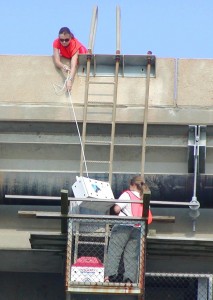
Carla Schneider and Libby Mojica remove peregrine chicks from a Norfolk bridge for translocation to Shenandoah Nat’l Pk, VA. Photo by Adam Duerr.
Twenty pairs made breeding attempts and produced 76 eggs and 47 young that survived to banding age. There was a high depredation rate this year with four broods lost on the towers to raccoons and Great-horned Owls. A new territory was established this year at a nest box on a Dominion power plant stack where a box had been installed several years ago. The pair arrived too late in the season to breed. We also documented a rare occurrence double brooding when the long-established pair on the Berkley Bridge in Norfolk raised two full-grown broods. After CCB biologists removed 2 30-day old chicks in May for hacking in the mountains, the pair moved to a nearby bridge and raised a single-chick brood.
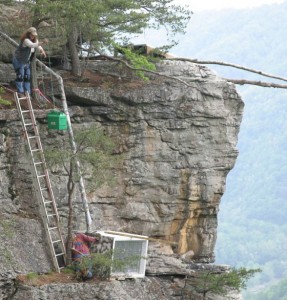
Installation of a new hack box at New River Gorge Nat’l River, WV. Photo by Gary Hartley.
We translocated 28 falcon chicks from coastal nests to hacking sites in Shenandoah National Park, New River Gorge National River, and Breaks Interstate Park. Chicks were removed from dangerous nest structures like bridges where they have a small chance of successfully fledging. The goals of the hacking program are to repopulate the historic breeding range in the southern Appalachians, provide a safe fledging environment, and reduce the impact of nesting peregrines on sensitive species along the coast. The hacking program would not be possible without the continued support of the National Park Service and the state wildlife agencies of both Virginia and West Virginia.



